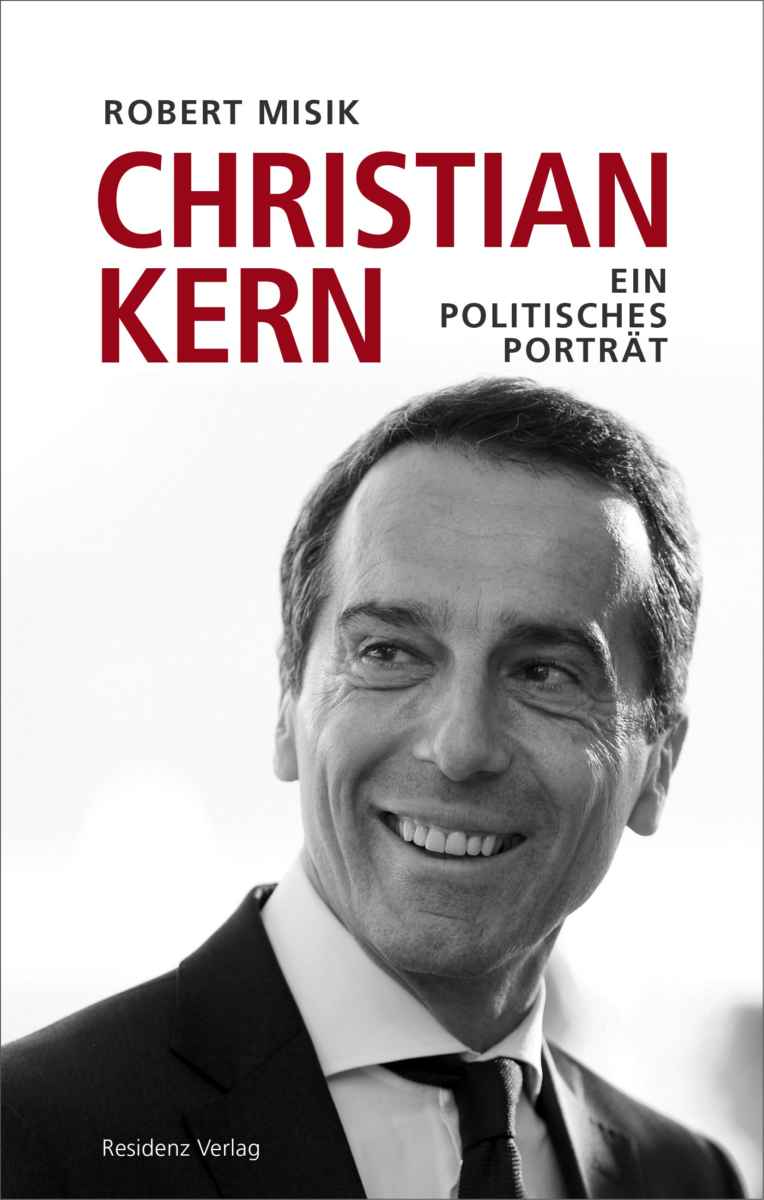
The choice between Kurz, Kern and Strache
In September 2015, we concluded that Austria was moving to the right. Since then, two new leaders on the left and right have emerged. The Social Democratic leader Christian Kern (SPÖ; *1966) and the Christian Democrat leader Sebastian Kurz (ÖVP; *1986!). They both make the oppositional, right-wing, populist Freedom Party of Austria leader HC Strache (FPÖ; *1969) look like the old guy in the race. Although he has never held any executive office, he has been party chairman since 2005.
Biographer Robert Misik (Christian Kern. Ein Politisches Porträt; the book in German at Amazon.de) describes Christian Kern as a serious, controlled, distant, ambitious, authentic and knowledgeable man. When he came to power, Chancellor Kern promised an end to the empty, meaningless kind of politics that had dominated Austria for years (Ende der Inhaltlosigkeit). As a former boss of the state owned Austrian railways (ÖBB), he has the image of a modernizer, who made the company more efficient and punctual. He is one of the rare Social Democrats with a certain credibility when it comes to issues regarding the economy. A low point had been his predecessor, Chancellor Werner Fayman, a disgrace to both his party and Austria as a whole.
Although himself young and dynamic, Chancellor Kern faces a dangerous rival in the 2017 election: Sebastian Kurz. He is even younger and looks as dynamic as Chancellor Kern himself, although he has not that much to show for yet. He rose to power because his conservative, Christian democratic ÖVP has the habit to destroy its leaders in short intervals.
In the 2017 election, the Christian democratic party sets everything on Sebastian Kurz who runs as head of Liste Sebastian Kurz – Die neue Volkspartei (ÖVP). If Kurz, appointed in May 2017 only should falter quickly once elected chancellor, the ÖVP will be in deep shit — sorry for the strong language, but you cannot change your leaders in short intervals without consequences.
So far, the Minister for Foreign Affairs and Integration Sebastian Kurz — appointed in 2013 — rose to prominence because of his young age and his call for a tight control of the EU external borders in the 2015 refugee crisis. In addition, he favored an Islam Law prohibiting the foreign funding of mosques (by foreign governments, religious entities, foundations, individuals, etc.). Therefore, Sebastian Kurz is even more so a threat to the right-wing, populist HC Strache, who has less space on the political right to maneuver, than to the Social-Democratic Chancellor Kern.
The outcome of the Austrian legislative elections, which will take place on October 15, 2017 cannot be predicted. It will be a close race between Kurz, Kern and Strache, with Kurz and his ÖVP currently taking the lead in the polls.
Among the smaller parties, the Greens face the challenge of their long-time party member Peter Pilz (*1954) who, in July 2017, decided to create his own party list, challenging the Greens as well as the established, major parties.
In addition, one has to add NEOS — The New Austria and Liberal Forum. Founded in October 2012, the party is advocating economic liberalism, a pro-EU agenda, better education, direct democracy, public financing of political parties and more. Indeed, economic liberalism has a hard time in Austria and corruption is widespread in a country where the Reds (Social Democrats) and the Blacks (Christian Democrats) have dominated politics in the entire post-war era.
Change is needed. But who will bring it? Kurz, Kern, Strache or one of the smaller parties, the Greens, NEOS and Peter Pilz? Or will it once again be Much ado about nothing (Viel Lärm um nichts)?
Beauty items at Amazon US and Amazon.co.uk.

Robert Misik: Christian Kern. Ein Politisches Porträt. Gebundene Ausgabe, Residenz Verlag, Mai 2017, 191 Seiten. Oder the book in German from Amazon.de. Books about Austria at Amazon.com, Amazon.co.uk.
Article added on September 3, 2017 at 09:51 Berlin time.